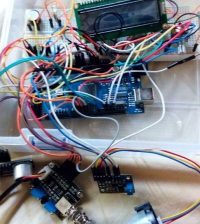- makeITcircular 2024 content launched – Part of Maker Faire Rome 2024Posted 2 weeks ago
- Application For Maker Faire Rome 2024: Deadline June 20thPosted 2 months ago
- Building a 3D Digital Clock with ArduinoPosted 7 months ago
- Creating a controller for Minecraft with realistic body movements using ArduinoPosted 7 months ago
- Snowflake with ArduinoPosted 8 months ago
- Holographic Christmas TreePosted 8 months ago
- Segstick: Build Your Own Self-Balancing Vehicle in Just 2 Days with ArduinoPosted 8 months ago
- ZSWatch: An Open-Source Smartwatch Project Based on the Zephyr Operating SystemPosted 9 months ago
- What is IoT and which devices to usePosted 9 months ago
- Maker Faire Rome Unveils Thrilling “Padel Smash Future” Pavilion for Sports EnthusiastsPosted 10 months ago
GSM Module – M10
This module produced by Quectel, too, is GSM/GPRS (GSM Phase 2/2+) compatible and is a Quad-band type; the radio section works at a frequency of GSM 850 MHz, GSM 900 MHz, DCS 1800 MHz, and PCS 1900 MHz. GPRS compatibility occurs in class-12 multi-slot modality, schemes CS-1, CS-2, CS-3 e CS-4. The GPRS connection supports TCP/UDP, FTP e HTTP protocols. The RF section is class 4 (2W) in GSM 850 MHz and GSM 900 MHz bands and class 1 (1W) in DCS 1800 MHz and PCS 1900 MHz. The module is managed by a microcontroller and has a TTL serial interface that allows it to communicate with the device that uses the cell phone (our circuit’s PIC) as well as to receive commands –standard AT commands, in the case of data phone connection. Aside from its own microphone, this module integrates a Flash and a SRAM, a UART, as well as interfaces needed for LCD display, audio, keyboard, and external SIM.
The module is encapsulated in a package measuring just 1.14 inches x 1.14 inches x 0.14 inches, for SMD with 64 pins placed laterally, and reaching underneath the sides; it consumes 3,4÷4.5 V but, when idle, absorbs only 1,1 mA.
Module M10
Block Diagram

















